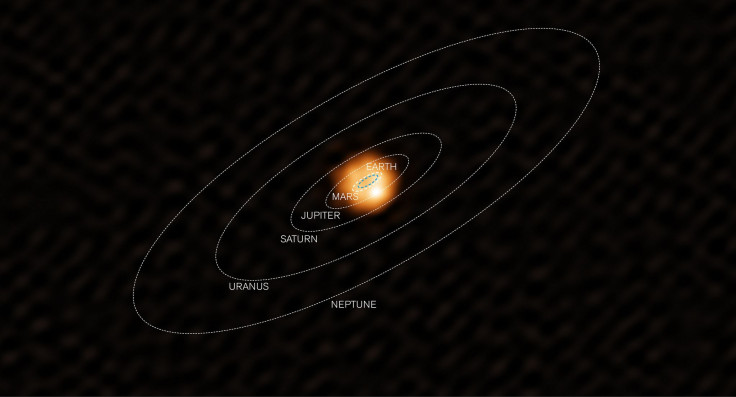Dying Star Shows Astronomers What Sun Will Be Like In The Future

An enormous, old star in the Hydra constellation is like a crystal ball: It could help astronomers predict the future of our sun.
Scientists have managed to get a detailed view of the red giant W Hydrae’s surface for the first time, scoring a close look at a star whose life has followed the same path that the sun is on. W Hydrae, which is 320 light years away, has roughly the same mass as the sun but is farther along on its road to death, so it is a window into our future. That window included an unexpected discovery: that there are powerful shockwaves within the star’s atmosphere.
The shockwaves suggest the layers above the star’s surface are hotter than astronomers have guessed based on models for this kind of star.
The team made their observations of the faraway star, in the water snake constellation, with the radio telescope Atacama Large Millimeter Array, called ALMA for short, in northern Chile’s Atacama Desert and described them in the journal Nature Astronomy.
As the study notes, our ideas about how stars like the sun will evolve during the final stages of their lives, in terms of how they will shed their masses and how their chemistries will change, are based upon our understanding of the stellar atmosphere — its makeup and movements. But predictions from these models are not the same as observing the real thing, so the astronomers’ close look at W Hydrae could help refine these ideas.
“For us it’s important to study not just what red giants look like, but how they change and how they seed the galaxy with the elements that are the ingredients of life,” researcher Wouter Vlemmings said in a statement from the Chalmers University of Technology in Sweden.
The aging red giant has a radius that is about 186 million miles — twice the distance from the Earth to the sun. If W Hydrae were at the center of our solar system, its atmosphere would smother our planet in its fiery exterior and consume it.
That’s exactly what will happen down the road. Stars of a medium mass like the sun expand into red giants as they get older, and they cool down and shed chunks of their masses in stellar winds. The sun already blows out particles in this fashion, sending radiation toward Earth and the other planets, but it happens on a greater scale with age; the stars send out the carbon and nitrogen they are making in their interiors, and those elements hang around in space until they are used to make new celestial bodies, the university explained.

“We are born from material created in stars like this, so for us it’s exciting to have the challenge of understanding something which so tells us both about our origins and our future,” astronomer Elvire De Beck said in the Chalmers statement.
This isn’t the first time scientists have gotten a close look at another star — earlier this year, for example, astronomers released a photo of Betelgeuse, in the constellation of the mighty hunter Orion, that was one of the most detailed image of star ever taken. ALMA was also used for those observations. The European Southern Observatory’s Very Large Telescope also took a super close photo of the red supergiant Antares, in the constellation Scorpius.
But Chalmers referred to the new observations as “the sharpest observations yet of a star with the same starting mass as the sun.”
The scientists are using ALMA and other instruments to dig deeper into W Hydrae and learn more about its atmosphere.
© Copyright IBTimes 2024. All rights reserved.





















